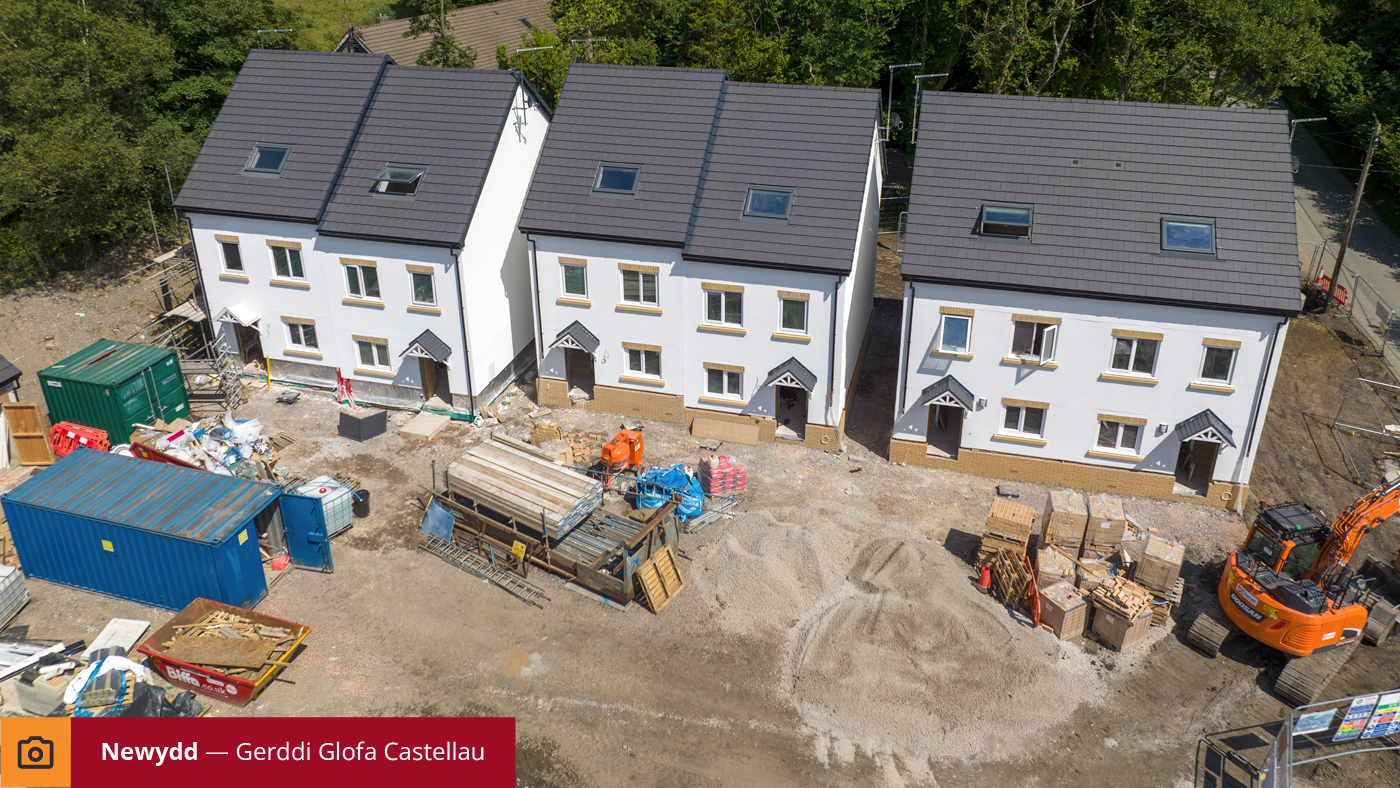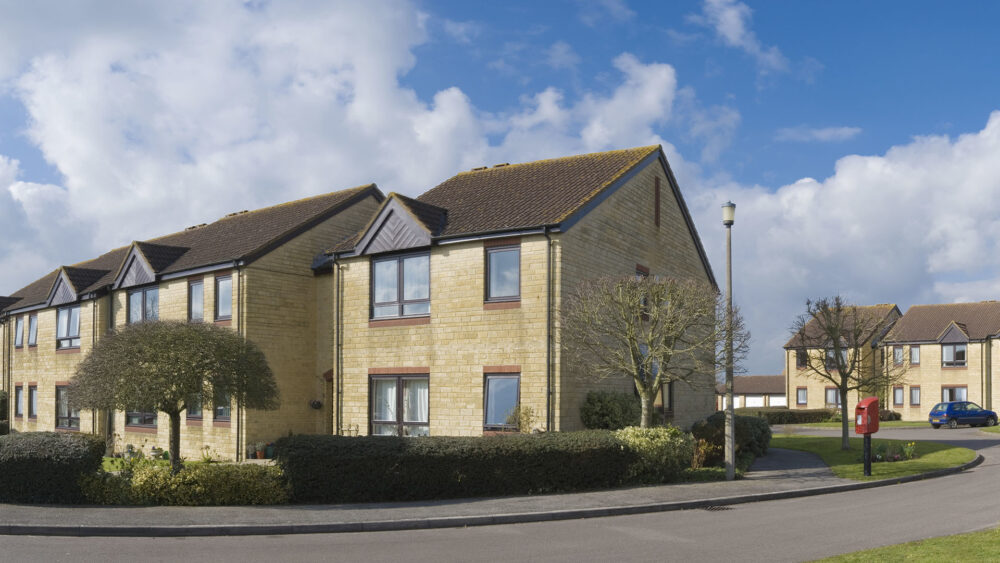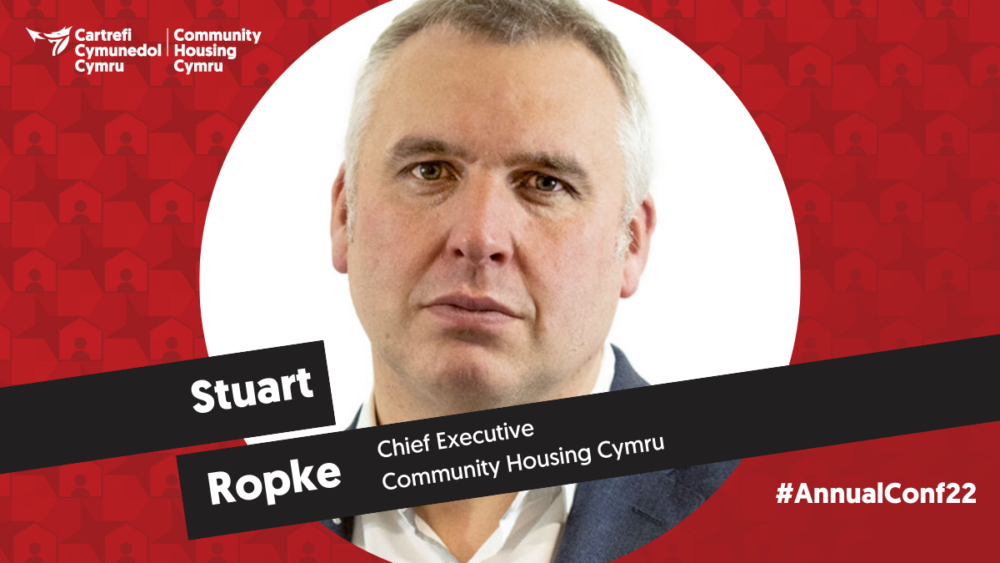Social home innovation continues despite national development pressures

In the first of a new blog series, CHC head of policy and external affairs Laura Courtney looks at how housing associations are still building the social homes Wales needs despite huge pressure on the whole housing sector - and the support that is crucial to advancing this further
2022 was a year of unprecedented challenges for social housing developers. The Covid-19 pandemic did not have the degree of immediate impact that was perhaps expected, as building schemes were underway and housing associations went above and beyond to deliver them. But as we have moved past the lockdown years, a number of factors have coalesced to significantly slow the pace of development and frustrate housing associations’ efforts to make progress.
Alongside external factors such as rising consumer prices - which have meant that housing associations have not only had to pay more for the materials needed to build homes, but that they have moved more of their ultimate finite resources to tenant support services - the housing industry is facing widespread process challenges too.
The planning system, for example, is under huge pressure across Wales, which is leading to long delays in gaining planning permission and ongoing uncertainty about when work might be able to begin. Meanwhile, the parallel system of environmental management assessment is not working as effectively as it should. This is also causing lengthy delays to getting schemes agreed, and in some areas means that no social housing development is currently possible at all.
These challenges have not abated as we have moved into 2023, and without proactive efforts to solve these issues their impact will grow.
Responding to community needs
Recently released figures evidence how these external factors have slowed the pace of social housing development over the past few years. One thing that pure data cannot show in full, however, is that where housing associations have been able to complete new homes, these are not just basic developments. Instead, they have built and renovated homes that support individuals and communities, and are more in tune with the environment than ever before - as shown in the case studies below.
But if we want this innovative work to continue at the pace required to create the level and type of social housing stock needed in Wales, we must look at changing the way we do things.
We cannot ignore that it has become more and more difficult for social housing schemes to get off the ground in recent years. Some of this is due to global factors beyond our control in Wales, but some barriers are being baked into the system as we are not looking at the climate and nature emergencies, and the housing crisis in a holistic way.
In 2023, we need to scale up our efforts to support housing associations to build and repurpose properties as affordable homes. Recent pragmatic funding initiatives from Welsh Government have helped to unlock stalled sites and update and bring existing homes back into use. We must now build on this success and mainstream this approach.
In addition, Welsh Government must streamline and properly resource the planning and environmental management systems, to support responsible and innovative development. We also need investment now in the water and waste management infrastructure so that we can once more advance the environmental credentials of social housing.
The following case studies show the breadth of work that Welsh housing associations have been doing over the past 12 months to develop new homes that work for local people, communities and the environment.
There is no one size fits all approach for these social housing providers, that have continued to deliver important schemes even in difficult times.
Low carbon homes
Sustainable communities
Accessible properties
Keeping people close to home
Remodelling and acquisitions to increase housing stock
Regeneration that promotes wellbeing
Low carbon homes
Housing associations are at the forefront of developing safe, high quality and low carbon homes in Wales, with many creating bespoke solutions that address local challenges.
In Autumn 2022, the first residents moved into a new development of affordable eco-friendly homes in Gaerwen, Anglesey. North Wales Housing Association partnered with Anglesey Council to deliver these houses and apartments which were designed to help meet the need for affordable homes in rural areas, and enable local people to put down roots.
Sustainability was prioritised in these properties, and a ‘fabric first’ approach taken to create highly-insulated homes which will retain warmth. As Gaerwen is not connected to mains gas, low carbon electric air source heat pumps and roof mounted Photovoltaics solar panels were also installed.Sustainable communities
The homes that housing associations deliver are what is referred to as mixed tenure - this means that the properties may be owned by the people who live in them, rented from a registered social landlord or private owner, or subject to a shared ownership agreement. Ultimately the goal with this type of development is to deliver a diverse range of affordable homes in order to better build integrated communities.
Pen Y Dre in Gowerton, Swansea is one example of this type of development from Coastal Housing Association. Completed in 2022, 41 new homes - comprising flats, bungalows and houses - were built on an old greenfield site in this popular location.
Accessible properties
Housing associations also deliver accessible homes for people who need them.
In August 2022, tenants moved into Clwyd Alyn Housing Association’s first ever certified Beattie Passive house, which is built to the energy efficient Passive standard, providing excellent health and comfort conditions, and has up to an 80% reduction in heating requirements.
Seen as one of this association’s most innovative builds, the low carbon, wheelchair accessible bungalow was developed as part of a scheme in Llanrwst, where the former Ysgol Dyffryn Conwy school is being converted into three apartments.
The new tenant, Mrs Harries, said as she moved into her new home, “I thought the house would be nice, but this is beyond nice, it's fabulous!
“This home will make such a difference to my life compared to where I previously lived, with simple tasks like leaving the house taking me an hour. Now I can access the entire home easily and get out and about due to its accessibility.”
Keeping people close to home
Building new social housing is an excellent way to help people stay close to their communities, especially when local properties are in high demand.
In Butetown, Cardiff, United Welsh housing association worked with the local authority to build one and two-bedroom apartments which are now offered at an affordable rent and feature low carbon and renewable energy technologies such as ground source heat pumps.
Speaking in the summer of 2022, one of the new residents of St Cuthbert's House, Davina Driscoll, told the United Welsh team: “I used to go to the old St Cuthbert’s church and school, so it’s nice to come back to where I’m from.
“I wanted to downsize and I love it here. I’ve moved from a three-bedroom house into a one-bedroom flat and I’m really happy with the home and location.”
Remodelling and acquisitions to increase housing stock
As external circumstances are delaying the delivery of new homes, housing associations have been working creatively to make maximum use of the housing stock they already have.
In June 2022, Trivallis completed two adapted and accessible bariatric flats in Rhydyfelin, Rhondda Cynon Taf. The flats were developed in a disused space - originally intended for commercial use - on the ground floor of Library Courts, a sheltered housing scheme with 32 affordable one and two bedroom apartments.
Sarah Davies, development manager at Trivallis, explained that: “Rhondda Cynon Taf County Borough Council’s local housing market assessment identified a high demand for accessible properties that could accommodate applicants with an adapted or bariatric need within the Taff area.
“We have worked closely with RCTCBC and the tenants, alongside a report produced by an occupational therapist, to ensure that the properties are adapted specifically to their needs to provide the utmost independence.”
Both flats were built with widened doorways and a level access shower, and appliances such as a rise and fall sink and hob. These adaptations will allow the tenants to live safely and with support, while maintaining independence and dignity.
Having moved from Stoke to one of the flats, one tenant shared the positive impact moving into a suitable property has had, saying: “I am now closer to my family, who give me a lot of support. The flat is spacious and is adapted to my needs which gives me a lot more independence.”
Regeneration that promotes wellbeing
Housing associations are also using innovative design to promote wellbeing and overcome problems such as food poverty. In Swansea, Pobl Group is working on a pioneering mixed-use regeneration development in partnership with Swansea University, the Active Building Centre, Public Health Wales and numerous other community groups.
When complete, the Biophilic housing development in the city centre will feature two south facing greenhouses at roof level, the largest of which will be serviced by an aquaponics system designed to produce up to 4.5 tonnes of fruits, vegetables, salads and herbs per year.
The aquaponics system will also create a continuous cycle where waste produced by fish, living in onsite tanks, adds nutrients to the water which feeds the greenhouse plants. The water will then be filtered and recirculated back into the system.
The vision for Biophilic Swansea sees residents running and managing the urban farm as a social enterprise. Research shows that reconnecting with nature is essential to our wellbeing, and that there are positive community and health outcomes from growing food and living more closely with the natural world.


